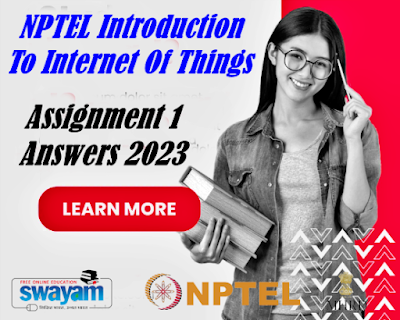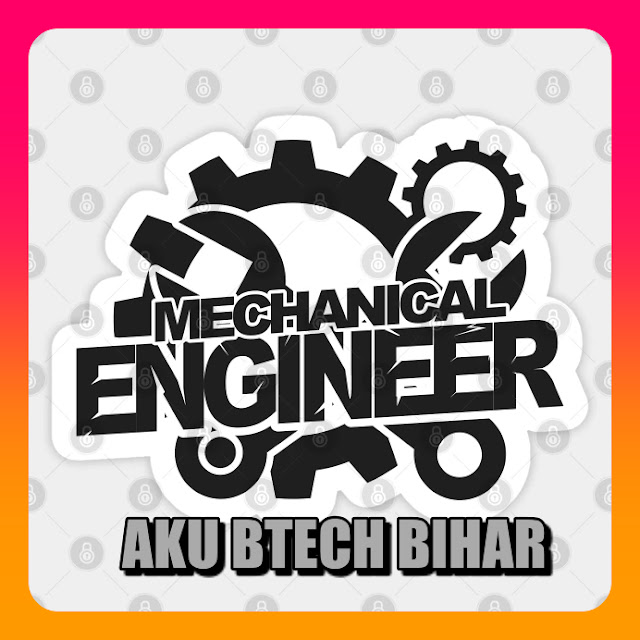NPTEL Introduction To Internet Of Things Assignment 1 Answers 2023
The NPTEL Introduction To Internet Of Things Assignment 1 in 2023 is an opportunity for learners to delve into the fascinating world of IoT. It aims to provide students with a solid foundation in the principles, concepts, and applications of the Internet of Things. As part of this assignment, you will encounter various questions that will test your understanding of the subject matter. In this article, we will explore and answer each question in detail, offering you valuable insights and expert guidance.
NPTEL Introduction To Internet Of Things Week 1 Assignment Answers 2023
1. Which of the following are the enablers of IoT?
- a. RFID
- b. Nanotechnology
- c. Sensors
- d. All of the these
Answer :- D
All of the mentioned options are enablers of the Internet of Things (IoT):
a. RFID (Radio Frequency Identification) allows objects or items to be uniquely identified using radio waves, enabling them to be tracked and managed within IoT systems.
b. Nanotechnology plays a role in IoT by providing miniaturized components and devices, making it possible to create tiny sensors, processors, and actuators that can be integrated into various objects, enabling them to connect to IoT networks.
c. Sensors are a crucial component of IoT, as they gather data from the physical environment and convert it into electronic signals, which can then be processed and utilized in various applications.NOTE:- Answers will be updated shortly and it will be notified in our WhatsApp & Telegram Group. So Join Now
2. Which of the following is/are NOT a characteristic of IoT?
a. Efficient, scalable and associated architecture.
b. Ambiguous naming and addressing.
c. Abundance of sleeping nodes, mobile and non-IP devices.
d. None of these
Answer :- b
3. State whether the following statement is True or False.
Statement: The increasing number of devices in IoT is expected to result in an address crunch.
a. True
b. False
Answer :- a
The statement is true. The increasing number of devices in the Internet of Things (IoT) is expected to result in an address crunch. As more and more devices get connected to the internet and the IoT ecosystem grows, there is a concern that the current Internet Protocol version 4 (IPv4) address space may become insufficient to accommodate all these devices. IPv4 has a limited number of unique IP addresses, and with the rapid proliferation of IoT devices, there is a risk of running out of available addresses.4. State whether the following statement is True or False.
Statement: The gateway has a unique network prefix, which can be used to identify them globally.
a. True
b. False
Answer :- b
The statement is false. Gateways in the context of IoT do not have a unique network prefix that can be used to identify them globally. Gateways act as intermediary devices between different networks, protocols, or communication technologies in IoT systems. They facilitate communication between IoT devices and the central cloud or server.
While gateways may have unique IP addresses within their local network, they don't typically have globally unique network prefixes. Instead, the uniqueness and global identification of devices in IoT networks are typically achieved through their individual IP addresses or other identification mechanisms. Gateways themselves are not globally identified based on their network prefix.5. Sometimes, when there is a need for the nodes to communicate directly to the Internet, ______________ can be used.
a. Sensors
b. Actuators
c. Tunneling
d. None of these
Answer :- c6. In _______________ a node/network is connected to multiple networks for improved reliability.
a. Transparent roaming
b. Multi-homing
c. None of these
d. Both (a) and (b)
Answer:- d. Both (a) and (b)
Both "Transparent roaming" and "Multi-homing" involve a node or network being connected to multiple networks for improved reliability and enhanced connectivity options.
a. Transparent roaming refers to the ability of a device to move between different networks (e.g., from Wi-Fi to cellular) without experiencing service disruptions. This ensures seamless connectivity as the device roams from one network to another.
b. Multi-homing, on the other hand, is the practice of connecting a single node or network to multiple networks simultaneously. This redundancy provides increased reliability, fault tolerance, and improved performance. If one network fails or experiences issues, the device can switch to an alternative network to maintain connectivity.
Both techniques are used in IoT and other networking scenarios to ensure continuous and reliable communication, either by transparently roaming between networks or by having multiple active connections (multi-homing) to enhance resilience.7. The IPv6 notation uses ___________________ values.
a. Roman
b. Hexadecimal
c. Both (a) and (b)
d. None of these
Answer :- b8. A _____________ detects (senses) changes in the ambient conditions or in the state of another device or a system, and forwards or processes this information in a certain manner.
a. Sensor
b. Actuator
c. Both (a) and (b)
d. None of these
Answer :- a9. A microphone is an example of an _____________.
a. Input device and actuator
b. Only actuator
c. Only Transducer
d. Input device and transducer
Answer :- d10. The ________________ of a sensor is the smallest change it can detect in the quantity that it is measuring.
a. Resolution
b. Bias
c. Noise
d. None of these
Answer :- a
The resolution of a sensor refers to the smallest change in the quantity it is measuring that the sensor can detect and accurately represent. It represents the level of detail or precision with which the sensor can measure changes in the input parameter. Higher resolution sensors can detect smaller changes in the measured quantity, while lower resolution sensors have limitations in detecting fine variations.
For example, in a temperature sensor with a resolution of 0.1°C, it can detect temperature changes as small as 0.1°C and accurately represent them in its output. Resolution is an important specification for sensors, especially when precise measurements are required in various applications, including IoT, automation, and scientific measurements.11. Based on the data type, sensors are classified as _______________________.
a. Scalar and Vector/Multimedia
b. Only scalar
c. Both (a) and (b)
d. Only vector
Answer :- a12. Solenoid valve is an example of ______________________.
a. Sensor
b. Actuator
c. Processing unit
d. None of these
Answer :- b13. An actuator requires a ______________________ and ______________________.
a. Control signal and a bias signal
b. Control signal and a source of energy
c. Noise signal and a source of energy
d. None of these
Answer :- b14. State whether the following statement is True or False.
Statement: Pneumatic rack and pinion actuators are used for valve controls of water pipes.
a. True
b. False
Answer :- a15. Which of the following is NOT a function of an IoT gateway?
a. Switching
b. Routing
c. Protocol conversion
d. Generating noise
Answer :- d| Course Name | Introduction To Internet Of Things |
| Category | NPTEL Assignment Answer |
| Home | Click Here |
| Join Us on Telegram | Click Here |
Disclaimer:- We do not claim 100% Surety of answers, plz verify answers before copying. We do not promote copying of answers and submitting assignments.
FAQs
What is the Internet of Things (IoT)?
The Internet of Things (IoT) refers to a network of interconnected physical devices that can collect and exchange data over the internet.
Why is IoT security crucial?
IoT security is vital to protect devices and user data from hacking, unauthorized access, and data breaches.
What are some common IoT protocols?
Some common IoT protocols include MQTT, CoAP, HTTP, Zigbee, and LoRaWAN.
How does IoT benefit the healthcare industry?
IoT improves healthcare through remote patient monitoring, telemedicine, and medical wearables.
How does IoT contribute to smart cities?
IoT enhances smart cities by optimizing transportation, waste management, and energy consumption.
What role does IoT play in agriculture?
IoT revolutionizes agriculture with precision farming, agricultural drones, and soil monitoring.
Conclusion
The NPTEL Introduction To Internet Of Things Assignment 1 in 2023 delves into the exciting world of IoT, covering its applications, protocols, and impact on various industries. By understanding the basics of IoT, its security challenges, and its applications in healthcare, smart cities, and agriculture, you will gain valuable insights into this transformative technology. Remember to prioritize security in IoT implementations and explore how IoT can create a more connected and sustainable future.





